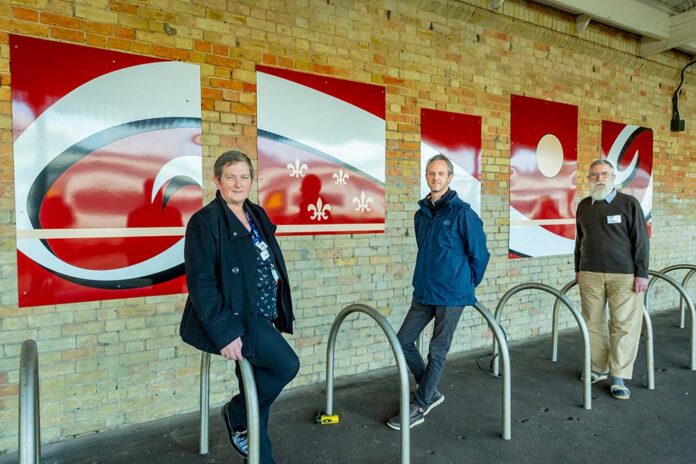Passengers travelling through King’s Lynn may be a bit surprised to see some artistic soup for the soul.
Work by a local artist has been on display at the station which is inspired by the iconic Campbell’s soup tin – the area being known for housing the first factory outside the USA in 1959.
Steve Messam was commissioned by environment and community charity Groundwork East. The charity has been engaged by Great Northern’s parent company Govia Thameslink Railway (GTR) to help make stations more attractive and efficient for passengers, and more sustainable assets for their local communities.
King’s Lynn is now one of 20 stations where the charity has delivered art or landscaping projects.
The station has also benefited from improvements put in place GTR at the suggestion of local people. Among over 250 stations to benefit from this broader improvements initiative, King’s Lynn has seen new landscaping, six new benches, information screens, toilet improvements and a mural in the waiting room, as well as the unique platform artwork.
Karen Gregson, GTR’s area manager, said: “This is one of more than 200 works of community art we’ve commissioned in the past year as part of a network-wide improvement programme. I’m delighted to thank all our local partners who have contributed so many ideas and so much effort into helping our stations serve their customers and communities better. At King’s Lynn we’re especially grateful to Steve Messam for creating this unique and distinctive artwork as a symbol of the town’s history and identity.”
John Grant, Chair of the Fen Line Users Association, said: “”It’s great that stations are being given a friendlier, more ‘lived-in’ feel. Along with the longer trains we now have on our line, it will help attract more people to rail travel, away from less environmentally friendly forms of transport. This artwork is in enamel, like the advertising signs that were a feature of stations a hundred years ago.”







































 0113 2082620
0113 2082620 info@railbusinessdaily.com
info@railbusinessdaily.com 15 Mariner Court, Wakefield WF4 3FL
15 Mariner Court, Wakefield WF4 3FL

